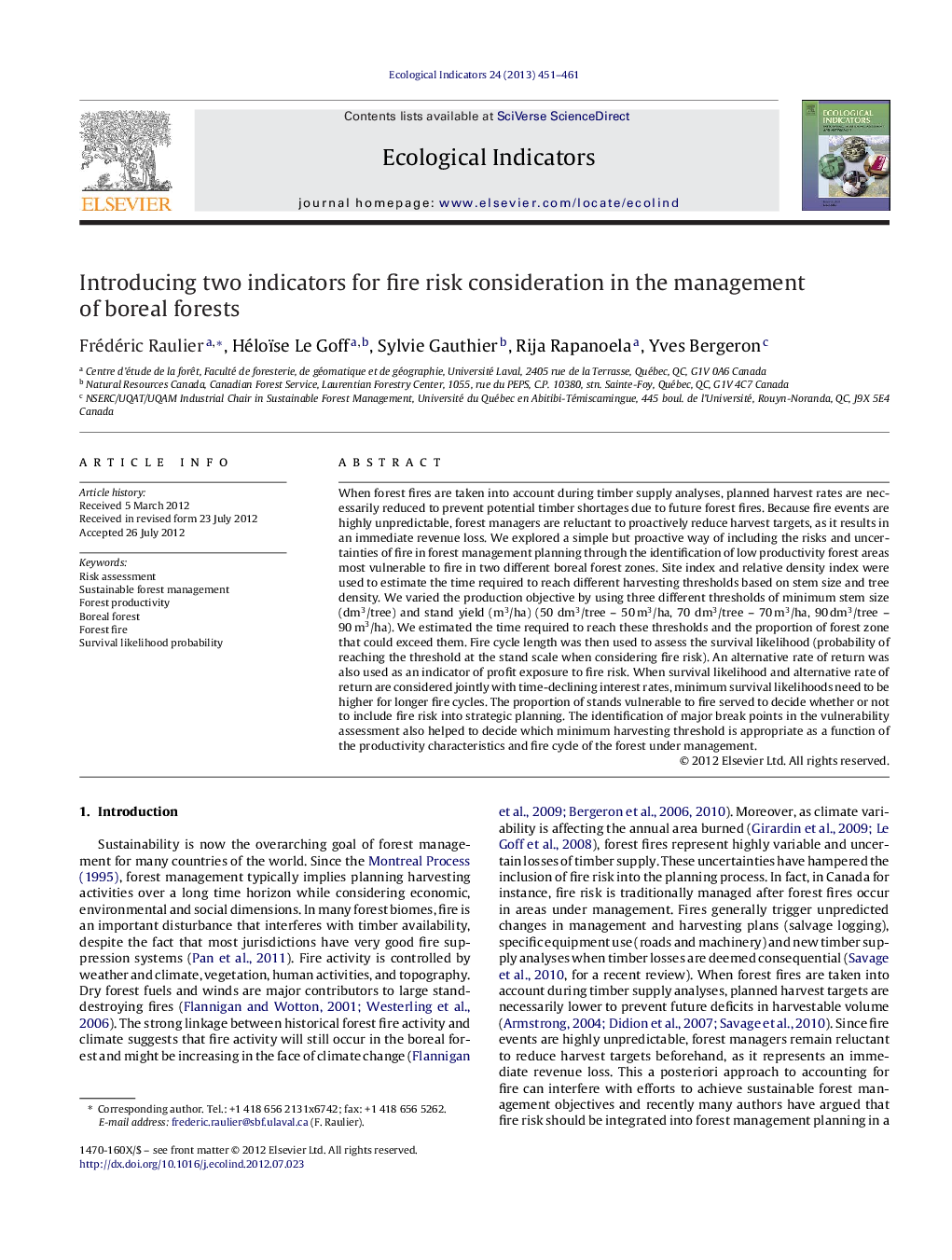| Article ID | Journal | Published Year | Pages | File Type |
|---|---|---|---|---|
| 4373665 | Ecological Indicators | 2013 | 11 Pages |
When forest fires are taken into account during timber supply analyses, planned harvest rates are necessarily reduced to prevent potential timber shortages due to future forest fires. Because fire events are highly unpredictable, forest managers are reluctant to proactively reduce harvest targets, as it results in an immediate revenue loss. We explored a simple but proactive way of including the risks and uncertainties of fire in forest management planning through the identification of low productivity forest areas most vulnerable to fire in two different boreal forest zones. Site index and relative density index were used to estimate the time required to reach different harvesting thresholds based on stem size and tree density. We varied the production objective by using three different thresholds of minimum stem size (dm3/tree) and stand yield (m3/ha) (50 dm3/tree – 50 m3/ha, 70 dm3/tree – 70 m3/ha, 90 dm3/tree – 90 m3/ha). We estimated the time required to reach these thresholds and the proportion of forest zone that could exceed them. Fire cycle length was then used to assess the survival likelihood (probability of reaching the threshold at the stand scale when considering fire risk). An alternative rate of return was also used as an indicator of profit exposure to fire risk. When survival likelihood and alternative rate of return are considered jointly with time-declining interest rates, minimum survival likelihoods need to be higher for longer fire cycles. The proportion of stands vulnerable to fire served to decide whether or not to include fire risk into strategic planning. The identification of major break points in the vulnerability assessment also helped to decide which minimum harvesting threshold is appropriate as a function of the productivity characteristics and fire cycle of the forest under management.
► Low productivity stands are more exposed to disturbances. ► Stand survival likelihood and profit exposure to risk were assessed. ► Forest vulnerability is sensitive to the fire cycle and production objectives. ► Major break points helps decide to include fire risk into strategic planning.
